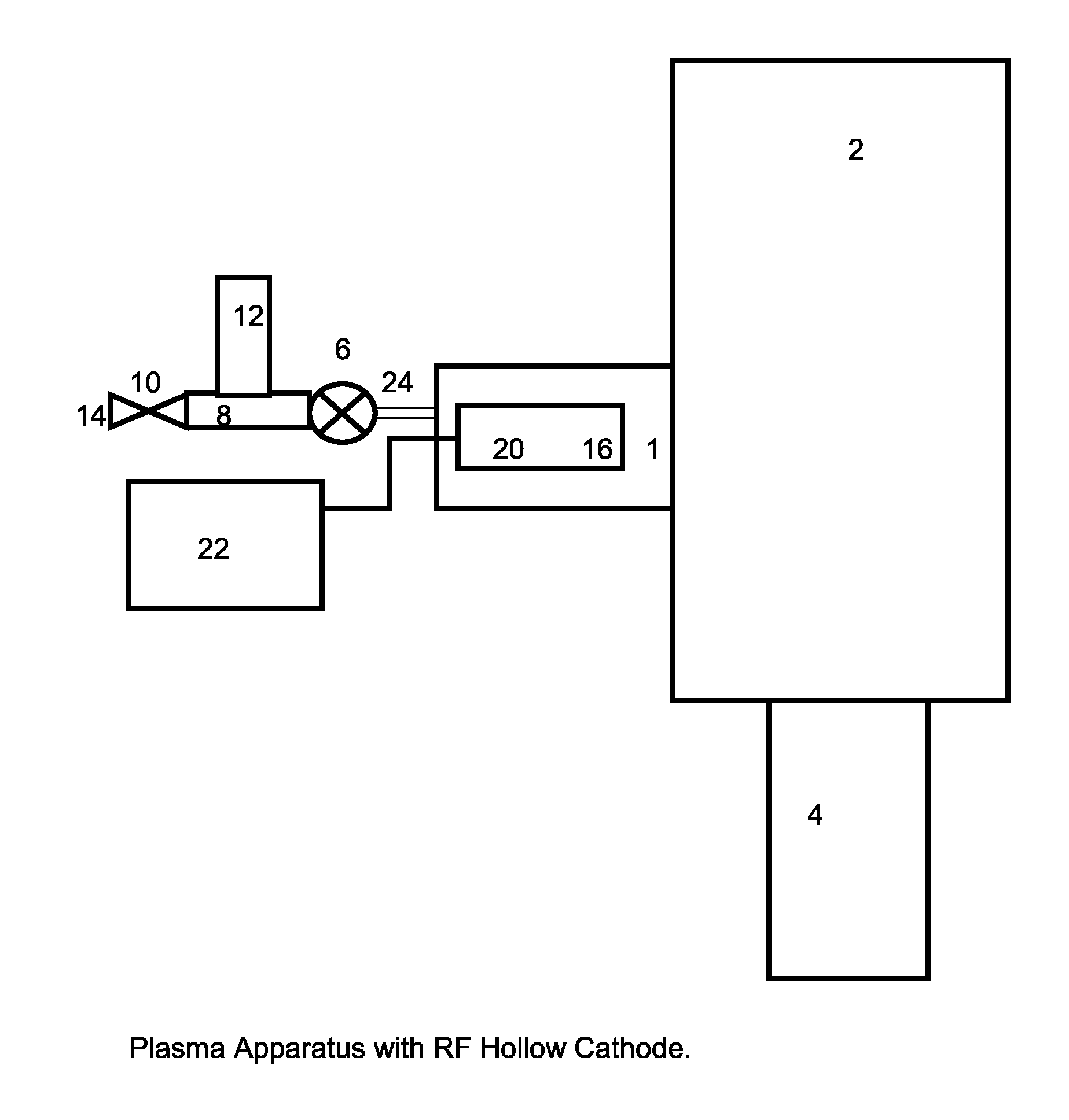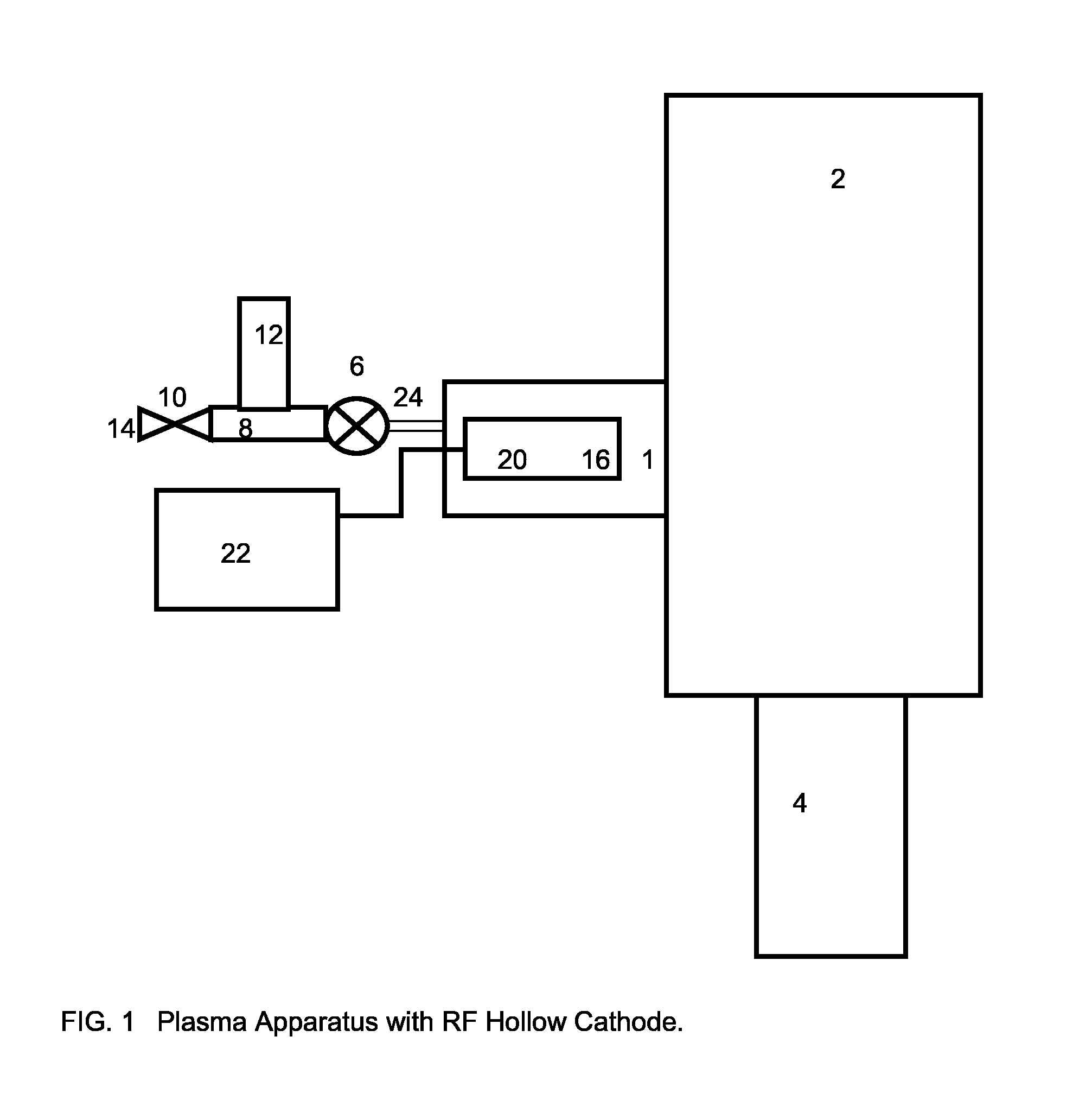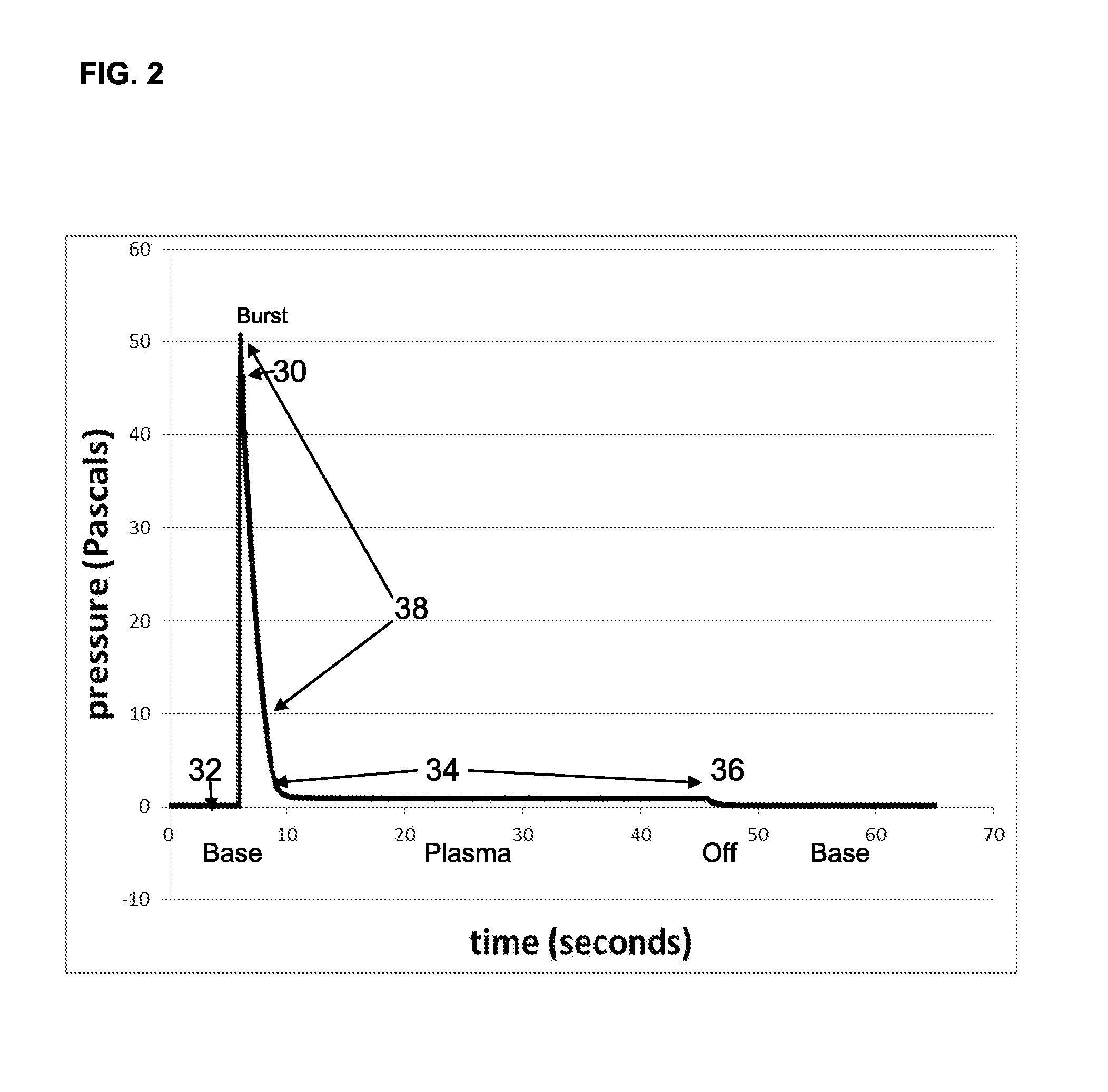Method and apparatus for plasma ignition in high vacuum chambers
- Summary
- Abstract
- Description
- Claims
- Application Information
AI Technical Summary
Benefits of technology
Problems solved by technology
Method used
Image
Examples
Embodiment Construction
[0043]FIG. 1 schematically illustrates the apparatus according to the present invention. A small plasma chamber 1 is attached in fluid communication with the main vacuum chamber 2 of an analytical instrument. As mentioned, the present invention is particularly concerned with the specimen chamber of an electron microscope or similar analytical instrument using an electron beam such as a scanning electron microprobe instrument or focused ion beam instrument. Accordingly, main vacuum chamber 2 is the sample chamber of such an instrument.
[0044]Main vacuum chamber 2 is connected to a turbo-molecular pump (TMP) 4, which is used to evacuate or draw a vacuum in chamber 2. An electronically controlled open / close valve 6 is connected to small plasma chamber 1 via a gas valve connector 24 at the end opposite main vacuum chamber 2. Valve 6 controls (in a binary fashion) the flow of a gas into small plasma chamber 1 from a gas manifold 8 and hollow cylindrical gas buffer chamber 12, which is in ...
PUM
 Login to View More
Login to View More Abstract
Description
Claims
Application Information
 Login to View More
Login to View More - R&D
- Intellectual Property
- Life Sciences
- Materials
- Tech Scout
- Unparalleled Data Quality
- Higher Quality Content
- 60% Fewer Hallucinations
Browse by: Latest US Patents, China's latest patents, Technical Efficacy Thesaurus, Application Domain, Technology Topic, Popular Technical Reports.
© 2025 PatSnap. All rights reserved.Legal|Privacy policy|Modern Slavery Act Transparency Statement|Sitemap|About US| Contact US: help@patsnap.com



